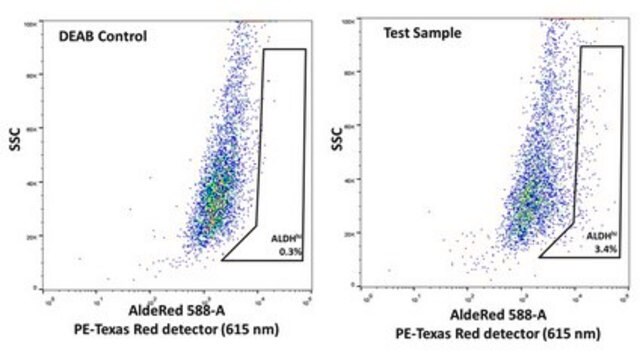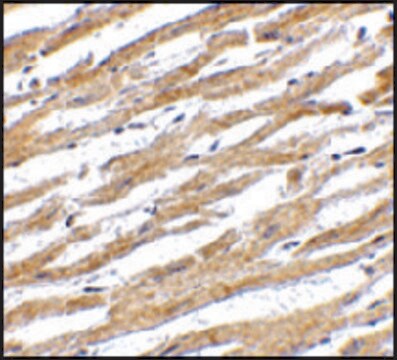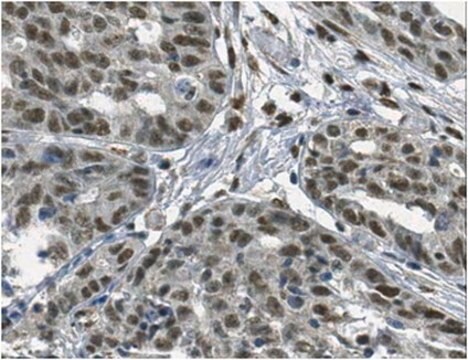MAB874
Anti-Papillomavirus Antibody, 16, 18 E6 protein, clone C1P5
clone C1P5, Chemicon®, from mouse
Sinônimo(s):
HPV
About This Item
Produtos recomendados
fonte biológica
mouse
Nível de qualidade
forma do anticorpo
purified immunoglobulin
tipo de produto de anticorpo
primary antibodies
clone
C1P5, monoclonal
reatividade de espécies
human
fabricante/nome comercial
Chemicon®
técnica(s)
immunohistochemistry: suitable
western blot: suitable
Isotipo
IgG
Condições de expedição
wet ice
Descrição geral
Especificidade
Imunogênio
Aplicação
Immunohistochemistry: Shows reactivity on formalin fixed tissue. Dilute with buffer pH 7.5-8.0 to desired working volumes. For extensive dilution, protein containing or other stabilizing medium should be used.
Immunopreciptiation: Immunoprecipiates 16.5 kDa band from human cervical carcinoma extracts {Banks, et al, 1987}.
Final working dilutions must be determined by end user.
Infectious Diseases
Infectious Diseases - Viral
Descrição-alvo
forma física
Armazenamento e estabilidade
Nota de análise
Human cervical carcinoma extract
Outras notas
Informações legais
Exoneração de responsabilidade
Não está encontrando o produto certo?
Experimente o nosso Ferramenta de seleção de produtos.
Código de classe de armazenamento
12 - Non Combustible Liquids
Classe de risco de água (WGK)
WGK 2
Ponto de fulgor (°F)
Not applicable
Ponto de fulgor (°C)
Not applicable
Certificados de análise (COA)
Busque Certificados de análise (COA) digitando o Número do Lote do produto. Os números de lote e remessa podem ser encontrados no rótulo de um produto após a palavra “Lot” ou “Batch”.
Já possui este produto?
Encontre a documentação dos produtos que você adquiriu recentemente na biblioteca de documentos.
Nossa equipe de cientistas tem experiência em todas as áreas de pesquisa, incluindo Life Sciences, ciência de materiais, síntese química, cromatografia, química analítica e muitas outras.
Entre em contato com a assistência técnica



![2-(2-Azabicyclo[2.2.1]hept-2-yl)ethanol AldrichCPR](/deepweb/assets/sigmaaldrich/product/structures/325/689/6a6eb812-ddc3-4fe3-9dc4-ad0b5caedd35/640/6a6eb812-ddc3-4fe3-9dc4-ad0b5caedd35.png)

